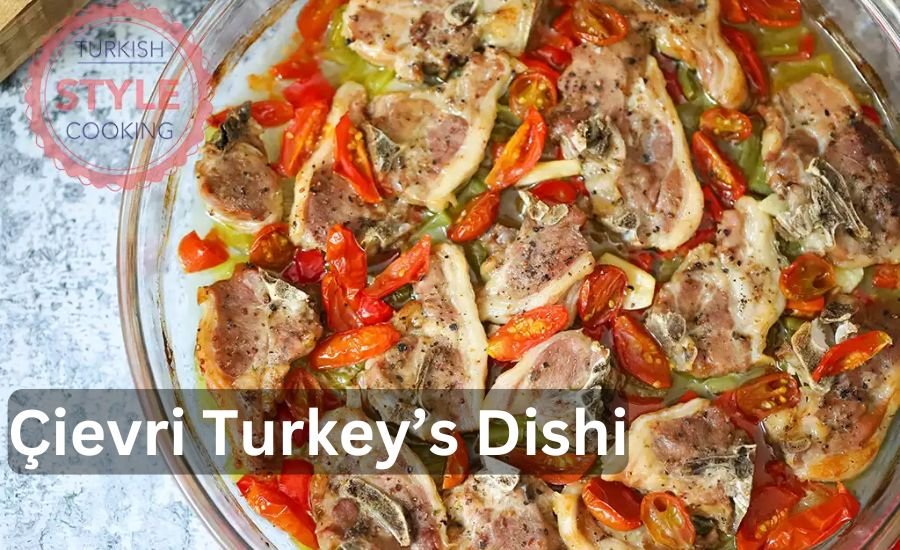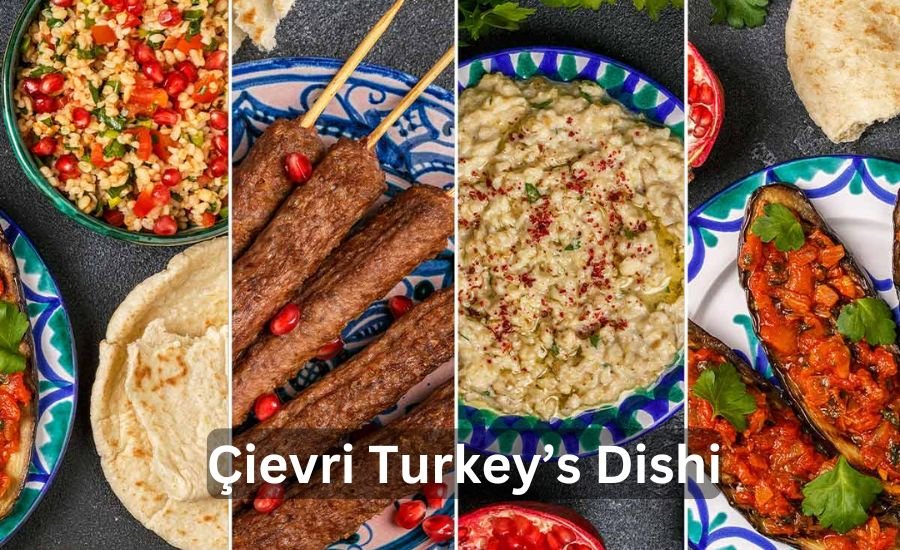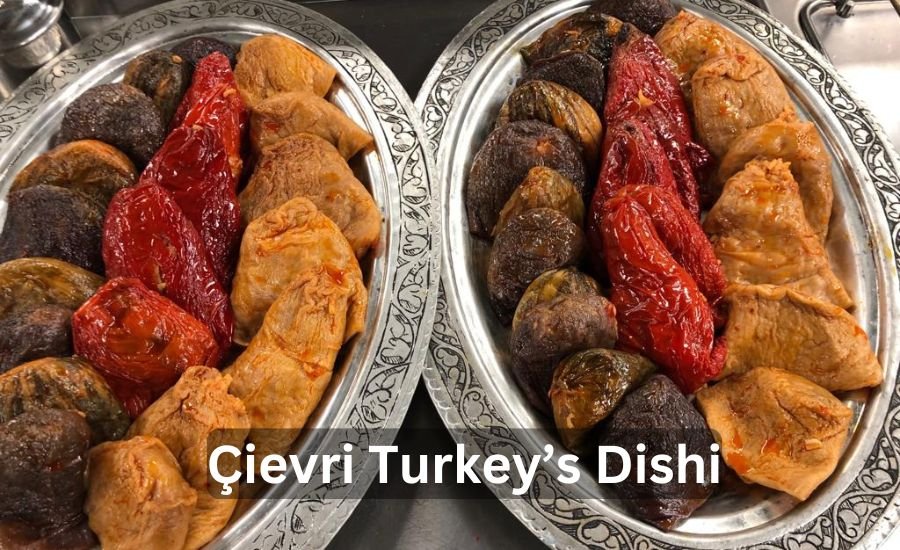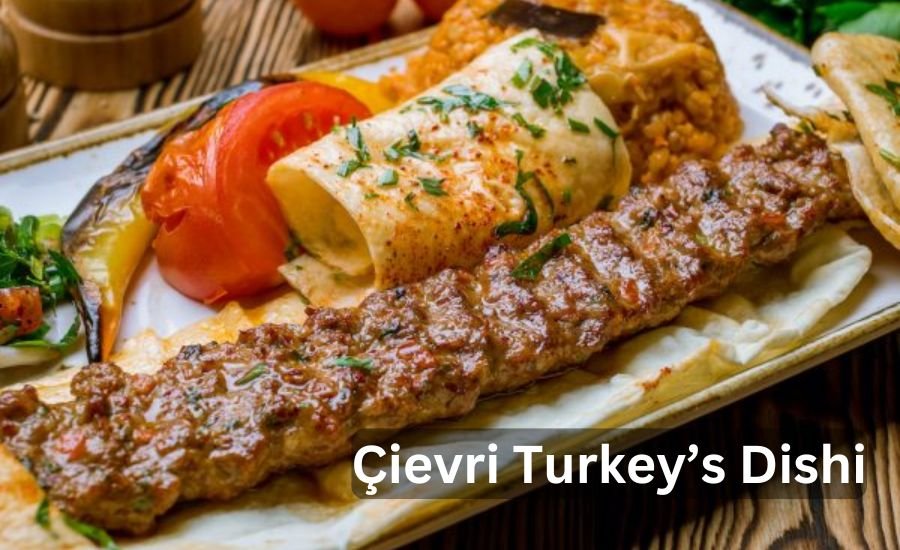Çievri is not just a traditional dish; it’s a vivid representation of Turkey’s rich culinary heritage. This distinctive delicacy, with roots deeply embedded in Eastern Turkish culture, offers a unique blend of history, flavor, and tradition. From its origins in ancient nomadic communities to its place in modern cuisine, Çievri stands as a testament to the resilience and creativity of Turkish culinary practices.
Understanding Çievri involves more than just appreciating its taste. It is a journey into the heart of Turkey’s food traditions, reflecting the ingenuity and cultural significance that have preserved it through the ages. As we explore the intricate details of Çievri, we uncover a story of culinary evolution and cultural pride that continues to captivate and inspire.
The Origins of Çievri: A Journey Through Turkish History
Çievri has a fascinating history deeply rooted in Turkish culture. This traditional dish originated in Eastern Turkey, where it was developed by early nomadic tribes who needed a practical and durable food source. The nomadic lifestyle required food that could be easily prepared and preserved, which led to the creation of Çievri. This dish was typically made with simple, local ingredients that could be easily carried during long travels, reflecting the practicality of early Turkish culinary practices.
The ingredients used in Çievri, such as flour and spices, were staples in the diet of these early communities. The preparation method was designed to make the food last longer, ensuring that it could sustain the nomads on their journeys. Over time, Çievri became more than just a practical meal; it evolved into a symbol of Turkish tradition and cultural heritage. The dish has been passed down through generations, each adding their own touch to the recipe while maintaining its core essence. Understanding the origins of Çievri gives us a glimpse into the history and evolution of Turkish cuisine, showcasing the ingenuity of those who first created it.
How Çievri is Made: Traditional Techniques and Ingredients
Making Çievri involves a blend of traditional techniques and simple ingredients that highlight the craftsmanship of Turkish cuisine. The process begins with preparing the dough, which is made from flour, water, and salt. This dough is then rolled out into thin circles, a task that requires skill and precision. The filling, which can vary from spiced meat to vegetables, is placed in the center of each dough circle. The dough is then folded over the filling to create small, sealed pastries.
Cooking methods for Çievri can vary depending on regional traditions and personal preferences. Some recipes call for baking the Çievri until it reaches a golden-brown color, while others prefer pan-frying it to achieve a crispy texture. The choice of cooking method can influence the final taste and texture of the dish. This preparation process not only highlights the technical skill involved but also reflects the rich culinary traditions of Turkey. Each step, from dough preparation to cooking, is carried out with care, ensuring that the Çievri is both delicious and authentic. Mastering these techniques allows cooks to create a dish that honors its traditional roots while offering a flavorful dining experience.
Çievri’s Role in Turkish Culture and Social Gatherings
Çievri is much more than just a dish in Turkish culture; it’s a central element in social gatherings and cultural celebrations. Here’s how Çievri plays a significant role in Turkish life:
- A Symbol of Togetherness: Çievri is often prepared and shared during family meals and special occasions, emphasizing the importance of togetherness. Families gather around to enjoy the dish, creating a sense of unity and connection.
- Festive Occasions: During festive times such as weddings, religious holidays, and community festivals, Çievri is a common feature. Its presence at these events underscores its role in celebrating significant moments and bringing people together.
- Community Bonding: Çievri is frequently made for communal events, such as neighborhood gatherings and local fairs. Serving this dish at such events fosters a sense of community and shared cultural heritage among participants.
- Expression of Hospitality: In Turkish culture, serving Çievri to guests is a way of showing hospitality and generosity. It reflects the Turkish value of making guests feel welcome and appreciated, making it a crucial part of hosting.
- Cultural Tradition: The preparation of Çievri often involves traditional methods passed down through generations. This practice not only preserves culinary heritage but also strengthens family bonds as recipes and cooking techniques are shared.
- Celebration of Heritage: By including Çievri in celebrations and family gatherings, Turkish people honor their cultural heritage. The dish acts as a link between past and present, celebrating the rich history and traditions of Turkish cuisine.
- Creating Memories: Sharing Çievri during special occasions contributes to creating lasting memories. The act of preparing and enjoying the dish together helps build strong family connections and memorable experiences.
In summary, Çievri is deeply ingrained in Turkish culture, serving as a symbol of unity, hospitality, and tradition. Its role in social gatherings highlights its importance in fostering relationships and celebrating cultural values.
Regional Variations of Çievri: How Local Ingredients Shape the Dish
Çievri is not a one-size-fits-all dish; it varies significantly across different regions of Turkey. Each region has its unique take on Çievri, influenced by local ingredients and culinary traditions. For example, in some areas, the filling might include locally grown herbs and spices, giving each version of Çievri a distinct flavor profile. These regional variations reflect the diversity of Turkish cuisine and highlight how local ingredients can transform a traditional dish.
In regions such as Tunceli and Elazığ, the preparation of Çievri incorporates local agricultural practices, which adds a unique twist to the dish. The use of regional ingredients not only affects the taste but also connects Çievri to its geographical and cultural context. Exploring these variations provides a deeper appreciation for how Çievri adapts to different environments while maintaining its core characteristics. It also offers insight into the rich tapestry of Turkish culinary traditions and the ways in which local flavors and practices shape traditional dishes.
The Symbolism Behind Çievri: What Each Ingredient Represents
Every ingredient in Çievri carries its own symbolism and significance. The flour used in the dough represents the basic staple of life, forming the foundation of the dish. Salt, another essential ingredient, adds flavor and enhances the overall taste. The spices and herbs incorporated into the filling symbolize the diverse influences on Turkish cuisine, reflecting a blend of cultural and historical influences.
The process of making Çievri also holds symbolic meaning. The careful preparation of the dough and filling, as well as the meticulous cooking process, represents the effort and care involved in preparing a meal for loved ones. Each step in making Çievri is a testament to the values of hospitality and craftsmanship. Understanding these symbols provides a deeper appreciation for the dish and highlights the cultural and emotional connections associated with it.
Çievri in Modern Cuisine: Traditional Flavors with a Contemporary Twist
In recent years, Çievri has made its way into modern cuisine, where traditional flavors are given a contemporary twist. Chefs and home cooks alike are experimenting with new recipes and presentations, incorporating Çievri into a variety of dishes. For instance, you might find Çievri as a filling in gourmet sandwiches or as an ingredient in innovative salads.
These modern adaptations of Çievri retain the essence of the traditional dish while introducing new flavors and textures. This approach keeps Çievri relevant in today’s culinary landscape, appealing to a broader audience. By blending traditional techniques with contemporary creativity, chefs are ensuring that Çievri continues to be enjoyed and appreciated in new and exciting ways.
You May Also Like; Srbb org Pappardelle
Health Benefits of Çievri: A Nutritional Perspective

Çievri is not just a delicious dish but also offers numerous health benefits. Here’s a closer look at why it can be a nutritious addition to your diet:
- Rich in Whole Grains: Çievri is often made with whole grains, like wheat or corn flour, which are excellent sources of dietary fiber. Fiber helps with digestion, keeps you full longer, and supports heart health by reducing cholesterol levels.
- Lean Meat Benefits: The lean meats used in Çievri, such as lamb or beef, provide high-quality protein essential for muscle growth and repair. Proteins are crucial for overall bodily functions and maintaining energy levels throughout the day.
- Nutrient Boost from Vegetables: Many Çievri recipes include vegetables like onions, peppers, and herbs. These ingredients are rich in vitamins and minerals that contribute to a well-rounded diet. Vitamins like A, C, and K, along with minerals such as potassium and magnesium, support immune function and overall health.
- Antioxidant Properties: The spices commonly used in Çievri, including black pepper and cumin, have antioxidant properties. Antioxidants help combat oxidative stress and reduce inflammation, which can lower the risk of chronic diseases and improve overall well-being.
- Balanced Energy Release: The combination of whole grains and proteins in Çievri provides a steady release of energy. Unlike refined carbohydrates that cause spikes in blood sugar levels, whole grains offer a more stable energy supply, which can help maintain focus and prevent energy crashes.
- Supports Metabolism: Ingredients like cumin and black pepper can enhance metabolism. These spices help in digestion and can contribute to better nutrient absorption, which supports overall metabolic health.
- Hydration and Satiety: The moisture content in Çievri, combined with fiber and protein, helps keep you hydrated and satisfied. Proper hydration is crucial for maintaining energy levels and supporting bodily functions.
Incorporating Çievri into your diet not only allows you to enjoy a flavorful meal but also provides these valuable health benefits. It’s a tasty and nutritious option that can contribute to a balanced and healthy diet.
Where to Find Authentic Çievri: A Guide to Turkey’s Best Eateries
If you’re looking to taste authentic Çievri, Turkey is the place to go. Traditional Çievri can be found in local markets and village eateries throughout the country. These establishments often use time-honored recipes and fresh, local ingredients to prepare the dish.
In cities like Istanbul and Ankara, you can find restaurants that specialize in regional Turkish dishes, including Çievri. Seeking out these places will give you an authentic taste of Çievri and offer insight into how it is traditionally prepared and enjoyed. Exploring local eateries and markets provides an opportunity to experience Çievri in its most genuine form, showcasing the dish’s cultural significance and culinary heritage.
Çievri and Festivities: How This Dish Plays a Role in Celebrations
Çievri plays a central role in many Turkish festivals and celebrations. During these events, it is often prepared in large quantities and shared with family and friends. The dish’s presence at such gatherings highlights its importance in Turkish culture and its ability to bring people together.
Serving Çievri during festive occasions symbolizes joy and community. It is not just a meal but a way to celebrate and connect with others. Whether at a wedding, a religious festival, or a local fair, Çievri helps to create memorable experiences and strengthen social bonds. Its role in celebrations underscores its significance as a cherished part of Turkish traditions.
Reviving Çievri: Efforts to Preserve This Culinary Tradition
As culinary trends evolve, efforts are being made to preserve the tradition of Çievri. Chefs, food enthusiasts, and cultural organizations are working to keep the dish alive by promoting traditional recipes and educating others about its cultural significance. These efforts include hosting cooking classes, sharing recipes, and organizing events centered around Çievri.
The revival of Çievri helps to ensure that this traditional dish continues to be appreciated and enjoyed by future generations. By celebrating its history and maintaining its traditional methods, we can preserve the rich culinary heritage of Çievri and keep it as a vibrant part of Turkish cuisine.
The Craftsmanship of Çievri: Understanding the Art Behind the Dish
Making Çievri is an art that involves skill, precision, and dedication. From preparing the dough to filling and cooking, each step requires attention to detail. The craftsmanship involved in making Çievri reflects the expertise and care that go into creating this traditional dish.
Learning about the craftsmanship of Çievri provides insight into the techniques and practices that have been passed down through generations. It highlights the importance of maintaining traditional methods while appreciating the artistry involved. Understanding this craftsmanship deepens our appreciation of Çievri and the cultural significance it holds.
Culinary Innovations with Çievri: From Classic to Contemporary
Chefs are finding creative ways to incorporate Çievri into modern dishes, offering new and exciting variations on the traditional recipe. Innovations might include using Çievri as a filling in gourmet wraps, as a topping for pizzas, or as an ingredient in contemporary salads. These culinary experiments showcase how Çievri can adapt to modern tastes while still honoring its roots.
These contemporary adaptations bring Çievri to a wider audience, introducing it to those who might not be familiar with the traditional dish. By experimenting with new ingredients and presentations, chefs are keeping Çievri relevant and appealing in today’s diverse culinary landscape.
Çievri for Special Diets: Adapting the Dish to Meet Dietary Needs
Çievri can be adapted to suit various dietary needs, making it a versatile option for people with different preferences and restrictions. For those who follow a vegetarian or vegan diet, the meat filling can be replaced with plant-based alternatives. Additionally, gluten-free versions can be made by using alternative flours.
These adaptations ensure that Çievri remains accessible to a broader audience while still maintaining its traditional essence. By making these modifications, individuals with specific dietary needs can enjoy Çievri without compromising on flavor or authenticity. This adaptability highlights the dish’s versatility and its ability to cater to diverse dietary preferences.
Çievri in Turkish Literature: References and Symbolism

Çievri has been referenced in Turkish literature as a symbol of cultural heritage and tradition. In various literary works, Çievri represents more than just a dish; it embodies the essence of Turkish life and values. Authors often use Çievri to evoke a sense of nostalgia and to connect readers with the cultural landscape of Turkey.
These literary references provide a deeper understanding of Çievri’s significance beyond the kitchen. They illustrate how the dish is woven into the fabric of Turkish storytelling and cultural expression. By exploring these literary connections, we gain insight into the broader cultural impact of Çievri.
Read More; Meat Filled Puff Nyt Crossword
Making Çievri at Home: A Comprehensive Step-by-Step Guide
Making Çievri at home is a wonderful way to experience Turkish cuisine. This guide will walk you through each step, from preparing the ingredients to enjoying your homemade Çievri.
Step 1: Gather Your Ingredients
Ingredients for Dough:
- 2 cups of all-purpose flour
- 1 cup of warm water
- 1 teaspoon of salt
Ingredients for Filling:
- 1 cup of ground beef or lamb (alternatively, you can use finely chopped vegetables for a vegetarian version)
- 1 small onion, finely chopped
- 1 tablespoon of olive oil
- 1 teaspoon of ground cumin
- 1/2 teaspoon of black pepper
- 1/2 teaspoon of paprika (optional)
- Fresh herbs (like parsley or dill), finely chopped
Optional for Serving:
- Yogurt
- Fresh salad or vegetables
Step 2: Prepare the Dough
- Combine Dry Ingredients:
- In a large mixing bowl, combine 2 cups of flour with 1 teaspoon of salt.
- Add Water:
- Gradually add 1 cup of warm water to the flour mixture, stirring with a spoon or your hands until the dough starts to come together.
- Knead the Dough:
- Transfer the dough to a floured surface. Knead it for about 5-7 minutes until it is smooth and elastic. If the dough feels too sticky, add a bit more flour; if it’s too dry, add a small amount of water.
- Rest the Dough:
- Cover the dough with a damp cloth and let it rest for 30 minutes. This allows the gluten to relax, making the dough easier to roll out.
Step 3: Prepare the Filling
- Cook the Meat:
- Heat 1 tablespoon of olive oil in a pan over medium heat. Add 1 cup of ground meat and cook until browned, breaking it up with a spoon. Drain any excess fat.
- Mix Ingredients:
- Add finely chopped onions, cumin, black pepper, and paprika to the cooked meat. Stir well and cook for an additional 2-3 minutes until the onions are softened. Remove from heat and mix in the fresh herbs.
Step 4: Assemble the Çievri
- Roll Out the Dough:
- After resting, divide the dough into 10-12 equal pieces. Roll each piece into a thin circle on a floured surface, aiming for a thickness of about 1/8 inch.
- Add Filling:
- Place a spoonful of the prepared filling in the center of each dough circle. Be careful not to overfill.
- Seal the Çievri:
- Fold the dough over the filling to create a half-moon shape. Press the edges together firmly to seal, using your fingers or a fork to crimp the edges if desired.
Step 5: Cook the Çievri
- Preheat Oven (if baking):
- Preheat your oven to 375°F (190°C). Line a baking sheet with parchment paper.
- Bake or Fry:
- To Bake: Place the Çievri on the prepared baking sheet. Bake for 20-25 minutes, or until they are golden brown and crispy.
- To Fry: Heat a small amount of oil in a pan over medium heat. Fry each Çievri for 2-3 minutes on each side, or until they are golden brown and crispy.
Step 6: Serve and Enjoy
- Cool Slightly:
- Allow the Çievri to cool slightly before serving.
- Serve:
- Enjoy Çievri warm or at room temperature. They can be served with a side of yogurt and fresh salad or vegetables for a complete meal.
The Economic Impact of Çievri: From Local Markets to Global Recognition
Çievri has an economic impact that extends beyond local markets, contributing to Turkey’s culinary reputation on a global scale. Local producers and vendors benefit from the demand for Çievri, which supports small businesses and contributes to the economy. Additionally, the global recognition of Çievri helps to promote Turkish cuisine and attract tourism.
The dish’s popularity in international markets highlights its role in enhancing Turkey’s cultural and economic presence. By understanding the economic impact of Çievri, we can appreciate its contribution to both local and global economies and recognize the value it brings to the Turkish culinary landscape.
Çievri and Family Traditions: How the Dish Strengthens Bonds
Çievri is often prepared and enjoyed during family gatherings, reinforcing family traditions and strengthening bonds. The process of making Çievri together is a cherished activity that brings family members closer. Sharing the dish at family meals and celebrations creates lasting memories and fosters a sense of connection.
The role of Çievri in family traditions highlights its importance as more than just a meal; it is a symbol of family unity and togetherness. By participating in the preparation and enjoyment of Çievri, families uphold traditions and create meaningful experiences that are passed down through generations.
Çievri in Turkey’s Culinary Heritage: Preserving a Classic Dish
Çievri is an important part of Turkey’s culinary heritage, representing a link to the country’s traditional food practices. Efforts to preserve this classic dish include documenting traditional recipes, hosting cooking demonstrations, and promoting its cultural significance. These initiatives ensure that Çievri remains a vibrant part of Turkish cuisine.
Preserving Çievri involves not only maintaining traditional cooking methods but also adapting the dish for contemporary tastes. By celebrating its heritage and keeping the dish relevant, we contribute to the ongoing appreciation of Çievri and its role in Turkish culinary history.
Çievri in Popular Media: How This Dish Is Portrayed in Film and Literature
Çievri has made appearances in popular media, including films and literature, where it is often portrayed as a symbol of Turkish culture. These portrayals highlight the dish’s significance and contribute to its global recognition. Seeing Çievri in media helps to spread awareness and appreciation for its cultural value.
Media representations of Çievri play a role in elevating the dish’s status and showcasing its role in Turkish society. By highlighting Çievri in various forms of media, we gain a deeper understanding of its place in contemporary culture and its impact on global audiences.
A Culinary Tour of Çievri: Exploring Its Regional Variations Across Turkey

Taking a culinary tour of Çievri offers an opportunity to explore its regional variations throughout Turkey. Each region has its unique version of Çievri, influenced by local ingredients and culinary practices. This tour reveals the diversity of the dish and its significance in different areas.
Exploring these regional variations provides insight into how Çievri adapts to different cultural and geographical contexts. It also highlights the rich tapestry of Turkish cuisine and the ways in which local traditions shape the dish. This culinary journey enhances our appreciation of Çievri and its place in Turkey’s diverse food landscape.
Conclusion
Finding and enjoying authentic Çievri in Turkey is a fun adventure! From exploring local markets and village eateries to dining in big cities like Istanbul and Ankara, there are many great places to taste this delicious dish. Each spot offers a unique take on Çievri, reflecting Turkey’s rich culinary traditions.
Whether you’re trying it at a bustling market, a cozy restaurant, or even a local festival, experiencing Çievri is a wonderful way to connect with Turkish culture. So, next time you’re in Turkey, be sure to seek out this tasty treat and enjoy every bite of its amazing flavors!
If you want to read more informative blogs please stay with: Hurricane Season
FAQS
Q: What is Çievri?
A: Çievri is a traditional Turkish dish made from ground meat, often mixed with spices and wrapped in dough. It can be baked or fried and is known for its rich flavor and cultural significance.
Q: Where does Çievri originate from?
A: Çievri comes from Eastern Turkey, particularly from regions like Tunceli and Elazığ. It has deep roots in Turkish culinary traditions and was originally made to preserve meat during long journeys.
Q: How do you make Çievri at home?
A: To make Çievri, prepare dough with flour and water, then fill it with a spiced meat mixture or vegetables. Fold the dough over the filling, crimp the edges, and cook it by baking or frying.
Q: What are some common fillings for Çievri?
A: Common fillings for Çievri include spiced ground meat (like lamb or beef) and seasonal vegetables. Some variations may use cheese or other local ingredients.
Q: Can Çievri be found outside Turkey?
A: Yes, Çievri can sometimes be found in Turkish restaurants and markets worldwide. Look for places specializing in regional Turkish cuisine for an authentic experience.
Q: What is the best way to cook Çievri?
A: Çievri can be baked until golden brown or pan-fried for a crisp texture. Both methods are delicious, so it depends on your preference for cooking style.
Q: Is Çievri suitable for special diets?
A: Traditional Çievri contains meat and dough, so it may not be suitable for vegans or those on gluten-free diets. However, variations can be made to accommodate different dietary needs, such as using gluten-free flour or plant-based fillings.




